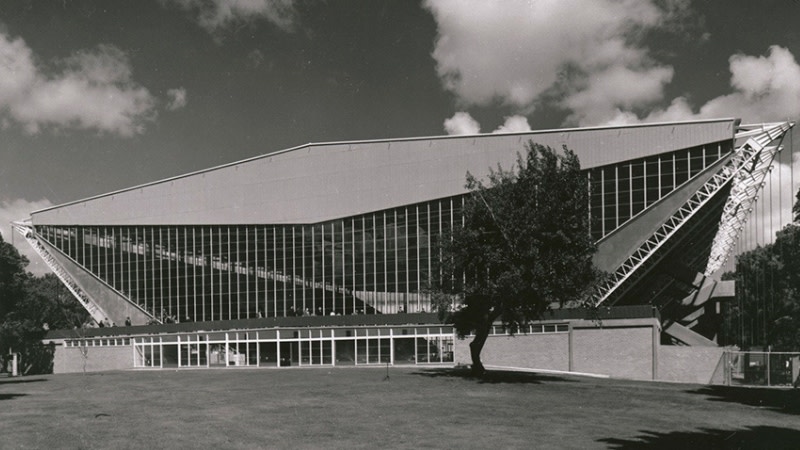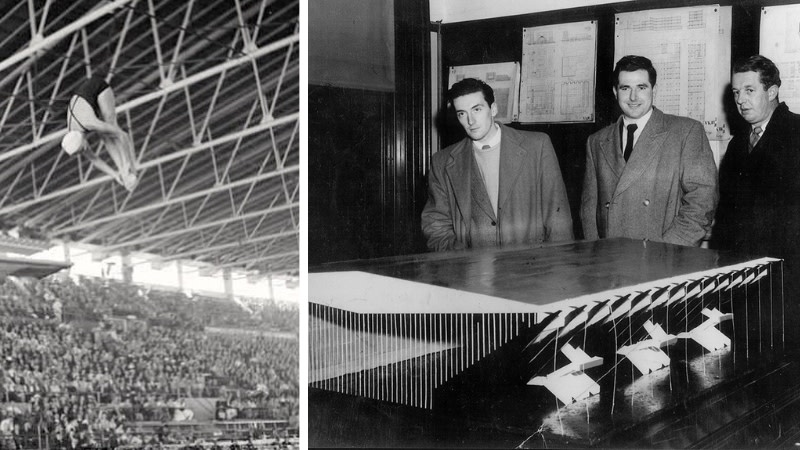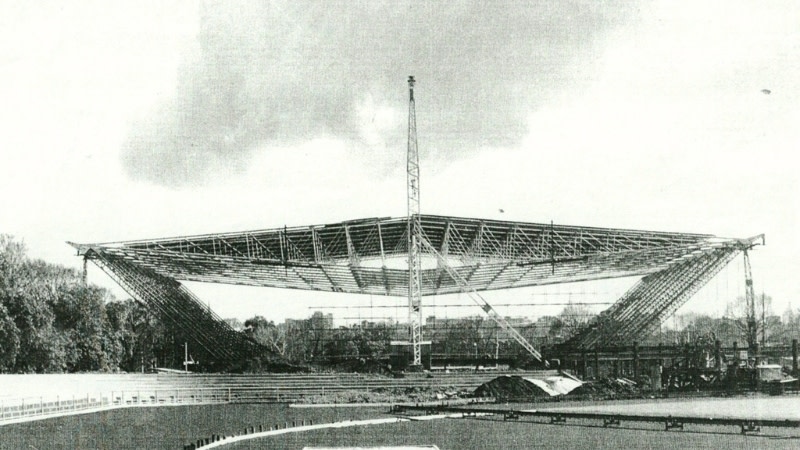Resources
Newsletter
Stay up to date and with the latest news, projects, deals and features.
Subscribe
As work ramps up for the coming Commonwealth Games in regional Victoria, a link to the state’s Olympic past has been getting attention.
Melbourne’s last remaining purpose-built building from the 1956 Olympic Games, the heritage-listed AIA Centre, has recently undergone critical maintenance works to preserve its original design.
Built to host the swimming, diving, and water polo competitions, and listed on the National Heritage Register and the Engineering Heritage register, it was the first building of its kind in Australia, and today remains the only post-tensioned steel building in the state.
The AIA Centre is now home to the Collingwood Football Club and Netball Club and is managed by the Melbourne and Olympic Parks Trust.

Works were completed over three weeks to maintain the building’s stability, tightening the 26 vertical tie-down rods that pretension the steel superstructure and provide lateral stability.
“The AIA Centre is a significant building in our city’s history – not only as an architectural achievement but in having made an important contribution to Melbourne’s cultural and sporting landscape,” Melbourne and Olympics Parks Trust chief executive John Harnden said.
“From the 1956 Olympics to its life as the Melbourne Sports and Entertainment Centre, and now as the home of Collingwood, this building is unique, and we are proud to have it within the Melbourne and Olympic Parks precinct.”
The protocols for the retuning works were completed by engineering firm WSP, which incorporates the practice founded by engineer Bill Irwin who, along with local architects Peter McIntyre, Kevin Borland, and John and Phyllis Murphy, won the 1953 design competition.

During the 1956 Games, the Olympic Swimming Pool was the scene of the infamous “blood in the water” water polo match between Hungary and the Soviet Union following the Soviet Union’s violent suppression of the Hungarian Revolution.
“An award-winning design at the time, the AIA Centre was designed to be material-light, reflecting the challenging post-war times where materials were limited, but labour was abundant,” Principal Director WSP Phil Gardiner said.
In addition to the tensioning works, the AIA Centre is in the process of a $15-million redevelopment to set up a multidisciplinary medical and sports performance hub thanks to a partnership between Collingwood Football Club and Monash University.
The four-phased project is due for completion in this year.
